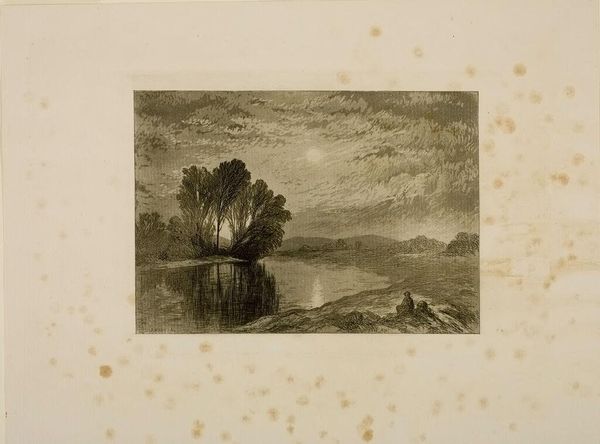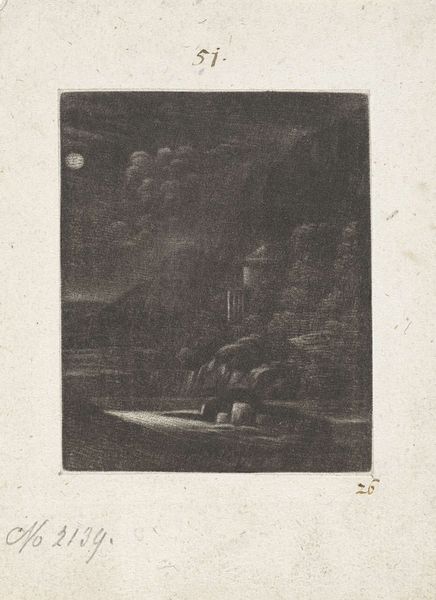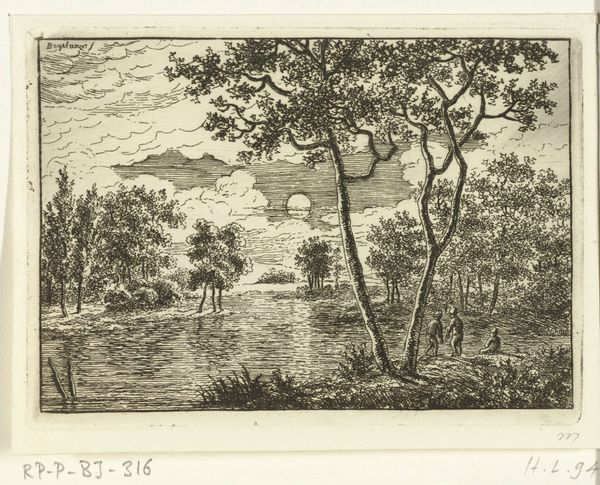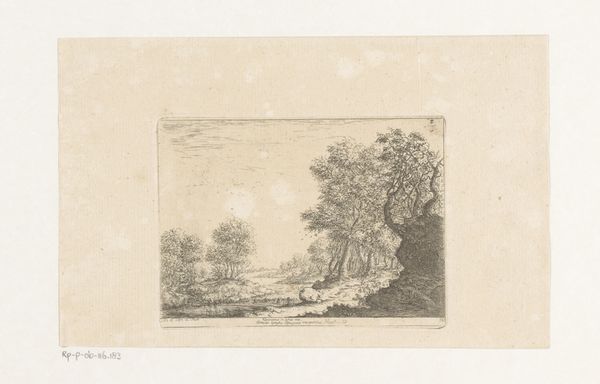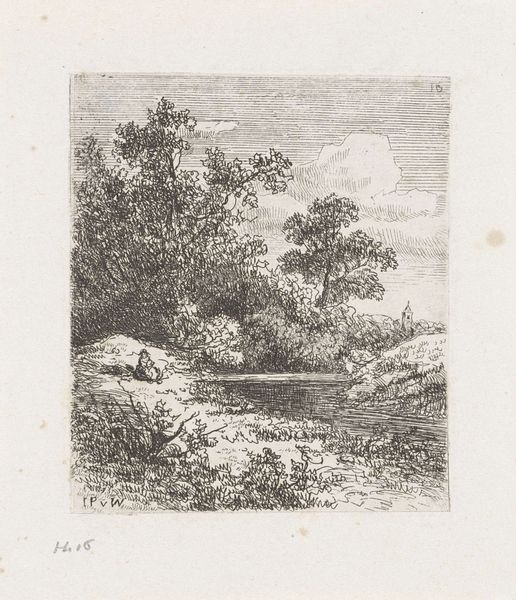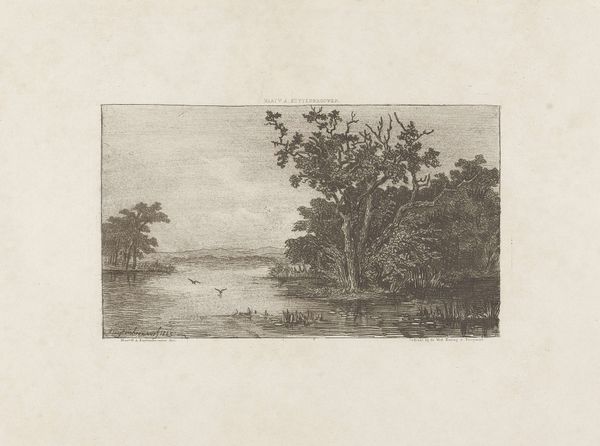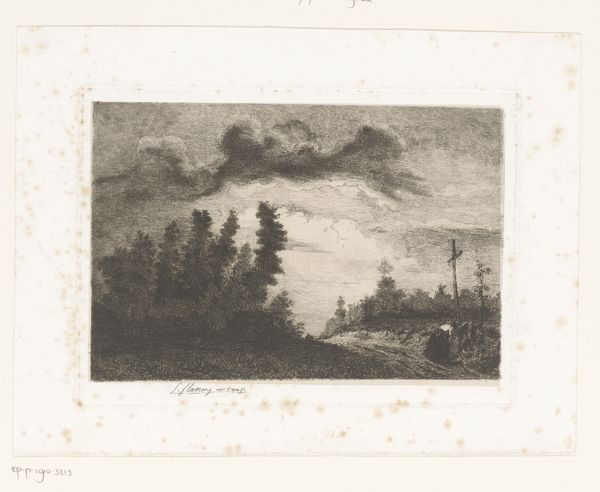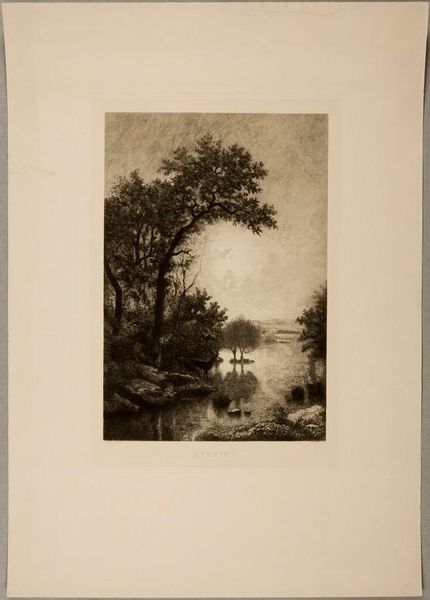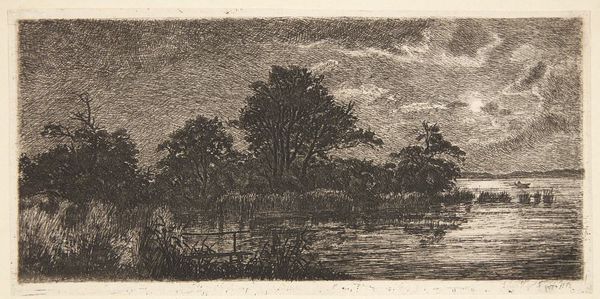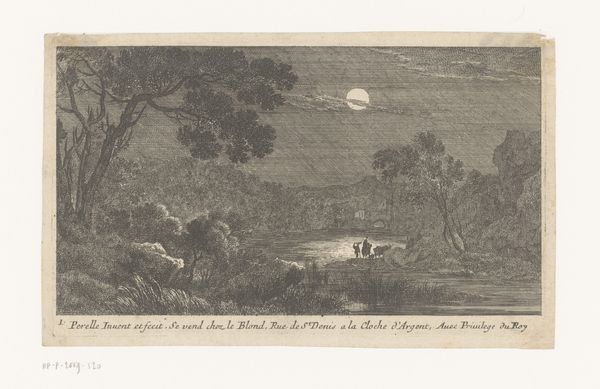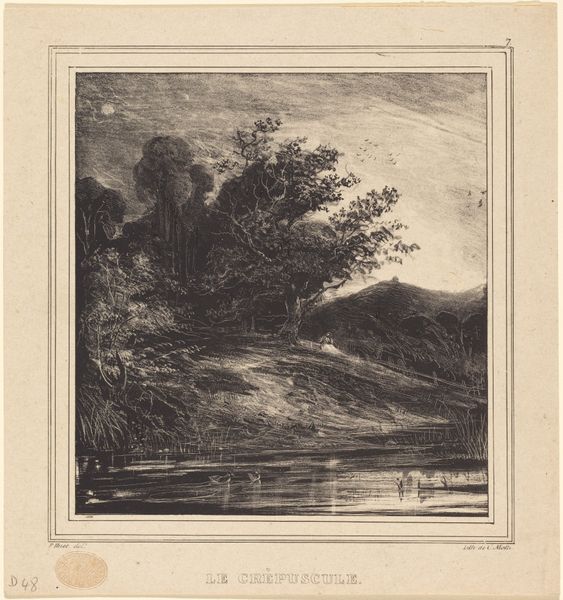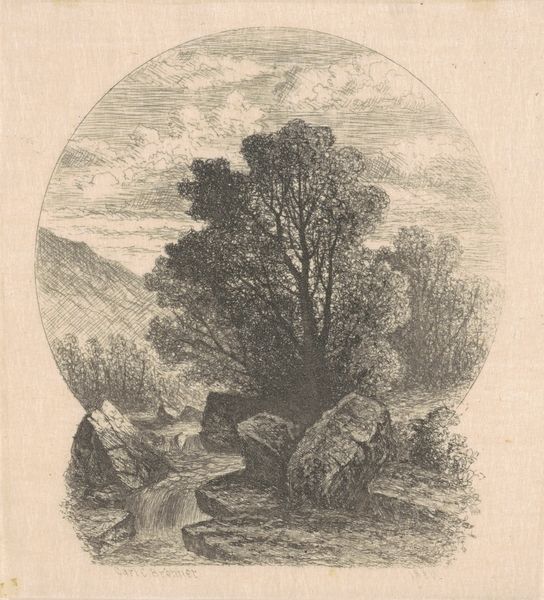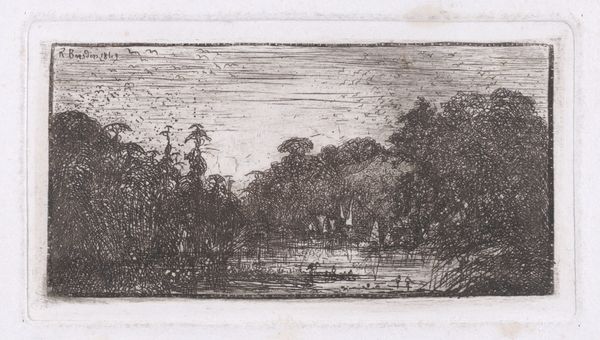
Dimensions: height 98 mm, width 86 mm
Copyright: Rijks Museum: Open Domain
Johannes Pieter van Wisselingh made this etching, Vissers bij maanlicht, at some point in the 19th century. The image depicts fishermen working by moonlight, and it connects to a wider cultural interest in the lives of working-class people. Van Wisselingh uses the graphic language of etching to create meaning. Consider the rough, sketch-like quality of the lines, which evoke a sense of spontaneity and immediacy. Made in the Netherlands, the image reflects the influence of the Dutch landscape tradition, but it also departs from it in some ways. Instead of depicting an idealized rural scene, Van Wisselingh focuses on the daily lives of ordinary people. Was he a progressive artist using his imagery to draw attention to the difficult lives of the poor? Or was he more of a conservative, documenting a vanishing way of life? To truly understand the meaning of this image, we need to consider its historical and cultural context more fully, consulting archives, letters, and other primary source materials. Art is contingent on social and institutional context.
Comments
No comments
Be the first to comment and join the conversation on the ultimate creative platform.
